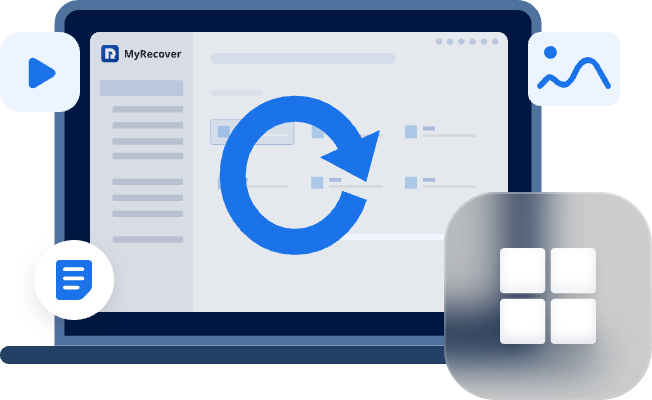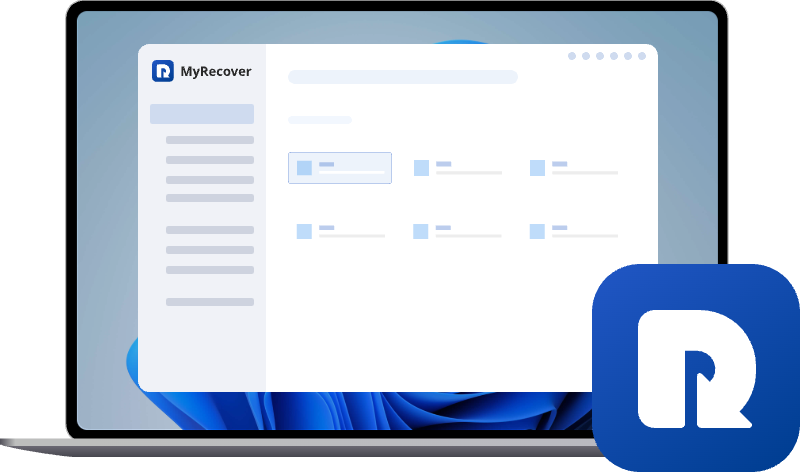My Desktop Icons Are Gone! Methods to Restore Windows Desktop Icons
It's a frustrating moment when you boot up your computer only to find a blank slate—your desktop icons are gone. This comprehensive guide provides multiple working methods to restore your missing desktop icons whether you're using Windows 10 or Windows 11.
Help! All My Desktop Icons Are Disappearing
Hey so earlier today I log into my computer and everything looks fine I plug in a new camera I got for my computer when out of no where all my icons disappear. All my games and college school work have been hidden or missing. What happens and is it possible to restore desktop icons?
- Question from reddit
Why Desktop Are Gone?
The sudden disappearance of desktop icons, files, and even the taskbar is a common Windows issue. The reason is rarely that your data has been deleted. Instead, it's almost always caused by a software glitch or a settings change.
1. The "Show Desktop Icons" Setting Was Toggled Off (Most Common Cause)
2. Windows Explorer Has Crashed or Frozen
3. You're Logged Into a Temporary User Profile
4. A Display or Scaling Glitch
5. Malware or System File Corruption
How to Restore Desktop Icons on Windows 11 or Windows 10?
As mentioned above, "desktop icons disappearing" issue can be caused by many factors from a simple settings toggle to a more complex system glitch. Don't panic; your files are likely still safe. Then following content focuses on how to restore Windows desktop icons via multiple working methods, starting from starting with the simplest quick fixes like enabling the "Show desktop icons" setting, and progressing to more advanced solutions.
Method 1: Run Anti-virus Software
Before proceeding, you can first run reliable anti-virus software to rule out the possibility of malware infection, as some viruses or malicious programs may alter system settings or corrupt system files, leading to the unexpected disappearance of desktop icons. Once you've confirmed the system is clean, you can confidently proceed with the following troubleshooting methods to restore your desktop icons step by step.
Method 2: Enable "Show Desktop Icons"
The most common reason for missing desktop icons is accidentally disabling the display setting. Take the below steps to check and correct that in seconds.
Step 1. Right-click on an empty area of your desktop. Select View from the context menu
Step 2. Ensure "Show desktop icons" is checked. If it was unchecked, checking it will immediately restore your icons.
Method 3: Restart Windows Explorer
If the Windows Explorer process (which manages your desktop, taskbar, and File Explorer) has crashed or frozen, your icons and even the taskbar may disappear. Restarting this process is a safe and effective way to reset it.
Step 1. Press "Ctrl + Shift + Esc" to open "Task Manager".
Step 2. Find Windows Explorer in the processes list. Right-click it and select "Restart".
Your desktop will refresh and desktop icons should reappear.
Method 4: Switch to Your Correct User Profile
Sometimes, Windows may load a temporary profile due to a corruption in your main profile, causing your desktop icons and personal settings to appear missing. The following stepsforce the system to reload your correct user profile, which typically restores access to your original desktop environment, files, and personalized settings.
Step 1. Click the "Start" Menu, then select the "Settings" . Navigate to Accounts, and then select "Accounts".
Step 2. On this page, access to "Your info", ensure that you are recognized and logged in with your regular user account. Look for any indications of a "Temporary Profile."
If a temporary profile is suspected, the most reliable fix is to save your work, sign out of your current session (via the Start Menu > User Icon > Sign out), and then log back in with your main account.
Method 5: Check Display Settings
Incorrect display scaling or resolution settings can sometimes make your desktop icons appear to vanish by rendering them off-screen or at an imperceptibly small size. This method verifies and corrects those settings.
Step 1. Right-click on an empty area of your desktop and select "Display settings" from the context menu.
Step 2. In the "Scale and Layout" section, ensure the percentage (e.g., 150%) is set to the one marked as "(Recommended)" for your monitor.
Step 3. In the "Display Resolution" section, similarly select the resolution that is marked as "(Recommended)".
Identify the Correct Monitor (if applicable): If you use multiple monitors, use the "Identify" button to see which screen is which, and ensure you are adjusting the settings for the correct one.
Method 6: Disable Tablet Mode
Tablet Mode is a Windows interface designed for touchscreens, which simplifies the layout and often hides desktop icons. If enabled accidentally on a non-touchscreen computer, it can make your desktop icons seem to vanish.
You can also go to "Start > Settings > Tablet". On this window, choose "Never use tablet mode".
Method 7: Run System Maintenance
Underlying system file corruption or component store issues can sometimes cause critical processes (like Windows Explorer) to malfunction, leading to missing desktop iconson Windows 11 or Windows 10. This method uses built-in Windows tools to automatically find and repair these problems.
Step 1. Press Windows key + X → select Command Prompt(Admin).
Step 2. Run these commands one by one:
dism.exe /online /cleanup-image /restorehealth (fixes Windows image)
sfc /scannow (repairs system files)
Beyond Icons: When Your Desktop Files Are Actually Missing
The methods above effectively help restoremissing desktop iconson Windows 11 or Windows 10. However, if you've tried these solutions and your files, folders, or even entire drives are still inaccessible, you might be facing a more serious issue like accidental deletion, partition lost, corruption, or drive failure.
In such cases, a specialized data recovery tool becomes necessary. FREE MyRecover is designed to help you in these scenarios, going beyond simple icon restoration to actually retrieve your lost data.

- ✨Easy-to-use interface: No command-line navigation or keyboard-based selection required.
- ✨Broad Compatibility: Fully supports Windows 11/10/8/7 and Windows Server.
- ✨Wide file support (1000+): Photos, videos, documents, audio files, archives, and more.
- ✨Supports all common devices (500+): HDDs, SSDs, USB flash drives, SD cards, external drives, etc.
- ✨Cover 500+ Scenarios: deletion, formatted disk, emptied Recycle Bin, system crashes and more.
- ✨AI-Powered Recovery: Uses AI recognition and deep scanning technology.
Step 1. Download and Launch MYRECOVER on your computer.Select the Drive where your files went missing and click "Scan".
Step 2. Select the files you wish to recover from the scan resultsand click "Recover". (To preview files before recovery, you can upgrade to Professional edition)
Step 3. Choose a safe location (must be different from the original one) to save the recovered files.
Summary
We hope this guidecanhelp you successfully recover your desktop icons and fileswhen you find desktop icons are gone.Don't let missing desktop icons or files disrupt your workflow. We recommend regularly backing up important data to external storage devicesusing Windows inbuilt tools like File History, Backup and Restore (Windows 7). But if accidents have already occurred, the reliable data recovery tool (MyRecover) can provide you with additional security protection.


